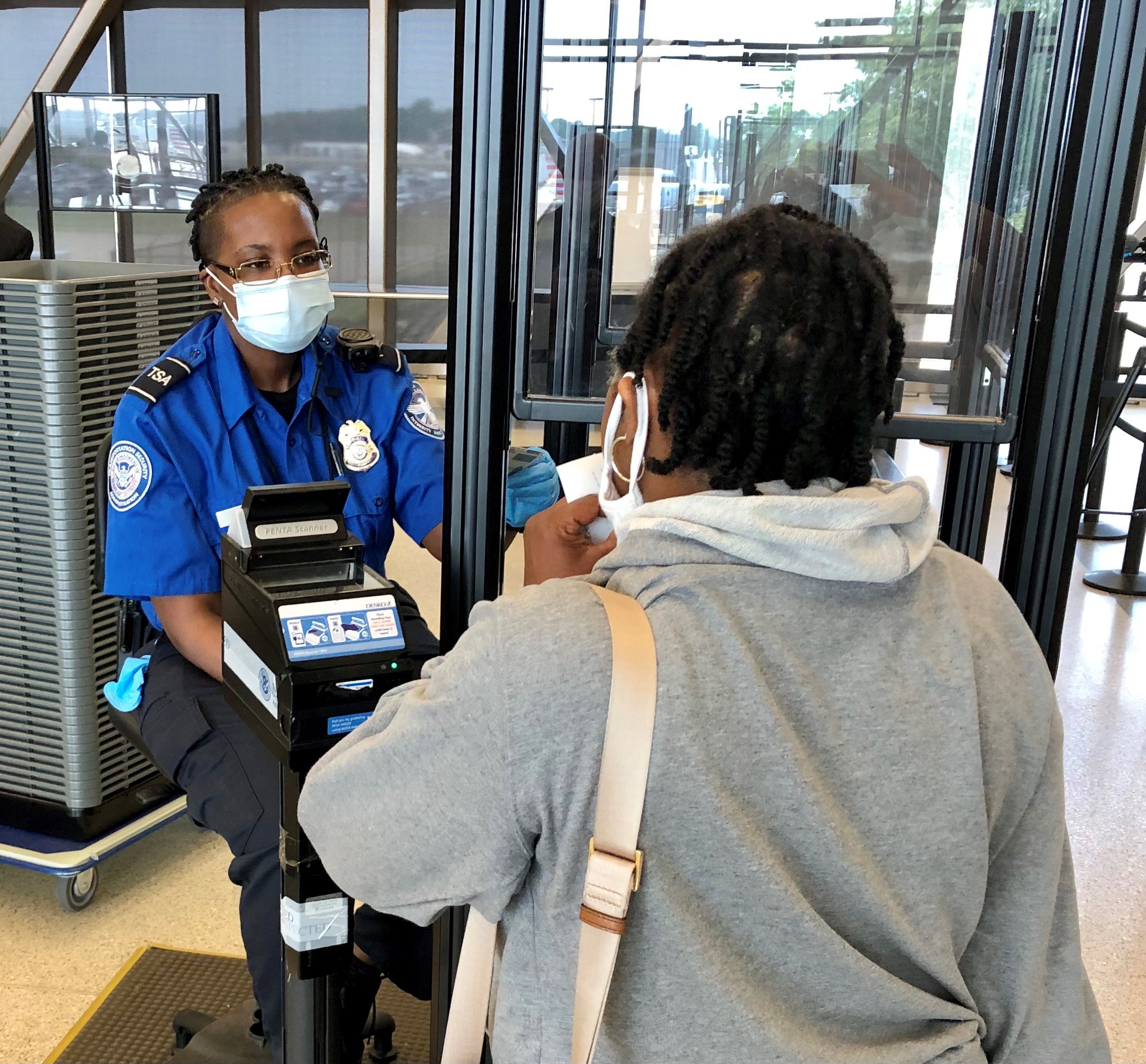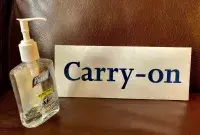
NEW YORK – The Transportation Security Administration (TSA) has seen travel volume increase during holidays and the TSA teams in the New York City region are prepared to handle the increase in the number of individuals planning to fly during the days leading up to Thanksgiving.
“We are committed to supporting a healthy and secure environment for airline passengers, TSA employees and airport personnel, although the checkpoint experience will look different to passengers who have not flown since the start of the pandemic and individuals flying out of John F. Kennedy International, LaGuardia and Newark Liberty International airports should arrive well before their scheduled flights and come be prepared for security screening,” said John Bambury, TSA’s Federal Security Director for John F. Kennedy International Airport.
Nationwide TSA officers have been screening between 1.9 and 2.2 million people daily, which is a large increase from last year, but still down significantly from pre-pandemic travel, when closer to 2.5 million people were screened daily, and even more for holidays.
“I recommend that travelers arrive at the terminal two hours prior to their scheduled flight, because we expect to see a spike in the number of travelers during the Thanksgiving travel period,” said Robert Duffy, TSA’s Federal Security Director for LaGuardia Airport. “Smart travelers come early and they arrive prepared to go through the security screening process. By that, I mean that they know what should and should not be packed in their carry-on bag and checked bags.” The TSA web site has a lot of helpful information on preparing for a flight.
Typically the busiest days are the Tuesday and Wednesday prior to Thanksgiving and the Sunday afterward. The highest travel day in TSA’s history was the Sunday after Thanksgiving of 2019 (pre-pandemic), when nearly 2.9 million individuals were screened at TSA security checkpoints nationwide. Travel volume this year is not expected to reach pre-pandemic levels, but it is expected to be notably higher than what was seen in the weeks leading up to Thanksgiving.
TSA does not anticipate that the federal employee vaccine mandate will in any way impact the agency’s ability to staff for Thanksgiving travel. TSA is working diligently to implement the vaccine requirement, including by promoting vaccination and ensuring every TSA employee is uploading their attestation information.
Travelers also need to know what can and cannot go in their carry-on bag from firearms to oversize liquids. It is important to know what items should not be packed in a carry-on bag because if a carry-on bag triggers an alarm, it will require a TSA officer to open the bag to resolve the alarm. This means that a TSA officer will have to open the bag and go inside to identify what item may have caused the alarm. Remember, it’s vital to reduce touchpoints during a pandemic, so be sure not to pack any prohibited items. Unsure if an item should be packed in a carry-on bag, checked bag, either or neither? Download the free myTSA app, which has a handy “What can I bring?” feature that allows you to type in the item to find out if it can fly. Or ask us on Twitter or Facebook Messenger at @AskTSA.
“Passengers whose items trigger an alarm at the checkpoint and have their carry-on bags flagged for a search typically state that they did not realize that they had the item with them, yet it’s important to remember that during a pandemic it is important to try to reduce touchpoints,” said Thomas Carter, TSA’s Federal Security Director for New Jersey. “When someone has a prohibited item that is in their carry-on bag, a TSA officer needs to open the bag to resolve the alarm, which means opening the bag and removing the prohibited item. My advice is that to help reduce the likelihood that a carry-on bag will require a search, travelers should start with an empty bag before they begin to pack so that there are no prohibited items inside.”
Travelers, TSA personnel and other individuals who work in the airports are required to continue to wear a mask as prescribed by the federal mask mandate when they are in airports, bus and rail stations, as well as while on passenger aircraft, public transportation, passenger railroads, and over-the-road buses operating on scheduled fixed-routes. This means that all travelers must be wearing a mask at TSA airport screening checkpoints and throughout the airport and during their flights. If a traveler does not have a mask, a TSA officer will offer a mask to that individual at the checkpoint.
Individuals who have not traveled recently will notice some changes in the checkpoint screening process. When approaching the travel document checking podium, passengers will see TSA officers wearing masks and gloves. Most will be positioned behind acrylic barriers to reduce cross contamination with passengers. TSA officers will change their gloves between each pat down and they will use a fresh swab if they need to swab a traveler’s hands or their carry-on items.
When travelers approach the travel document checking podium, they will be asked to scan their own boarding pass—electronic or paper—to reduce a touchpoint. They also will be asked to remove their masks for a few seconds so that the officer can match the individual’s face to the photo on their ID.
As travelers place their items into bins along the conveyor belt, they will continue to see TSA officers in masks, gloves and face shields standing behind an acrylic barrier offering guidance and answering questions.
TSA officers will be changing their gloves between each pat-down and between each bag search. Travelers may request that a TSA officer put on a new pair of gloves at any time. TSA officers also will be using a fresh swab for each passenger when testing for possible explosive material.
TSA employees will be conducting routine cleaning and disinfecting of frequently touched surfaces and security screening equipment at the checkpoints.
TSA is currently allowing travelers to bring one liquid hand sanitizer container up to 12 ounces per passenger in carry-on bags until further notice. Passengers can expect that these containers larger than the standard allowance of 3.4 ounces of liquids permitted through a checkpoint will need to be screened separately, which will add some time to their checkpoint experience. Travelers also are permitted to bring individually packaged alcohol or anti-bacterial wipes in carry-on or checked luggage.
To reduce touchpoints, it is recommended that travelers place items from their pockets such as wallets, keys, lip balm, tissues and cell phones into their carry-on bags to be screened instead of putting items from their pockets directly into bins. This minimizes the placing of personal items in a bin that you might hold to your face such as lip balm, tissues and cell phones. It also reduces the chance that travelers will leave something behind in a bin.
Individuals with disabilities, medical conditions and other special circumstances can contact the TSA Cares Helpline for additional assistance during the security screening process and to find out what to expect at the checkpoint. Individuals may request assistance through the TSA screening checkpoint by clicking here: https://www.tsa.gov/contact-center/form/cares or by calling (855) 787-2227 (Federal Relay: 711) 72 hours prior to traveling with questions about screening policies, procedures and what to expect at the security checkpoint. The TSA Cares phone lines are staffed weekdays from 8 a.m. to 11 p.m. ET and on weekends/holidays from 9 a.m. to 8 p.m. ET. TSA staff can explain the screening process for travelers requiring special accommodations or concerned about the security screening process.
Individuals who are planning to travel this Thanksgiving or Christmas season should consider enrolling in TSA PreCheck®. The popular expedited screening program allows travelers to leave on their shoes, jackets, belts and enables them to keep their electronics and 3-1-1 bags in their carry-on bags.
TSA PreCheck membership is more valuable now than ever before because it reduces touchpoints during the pandemic and puts travelers in security lines that have fewer travelers and move quicker, which encourages social distancing.

